Rubber plant is an evergreen tropical plant that can grow up to 50 feet. It can be grown indoors 8 to 10 feets as an ornamental plant. It is also tolerant to indoor light condition, and has air purifying property. If you put a rubber plant in the corner of a room, the corner will become more stylish and attractive becase of its glossy and silky leaves. It has been used for its latex sap to make rubber, hence its nicknames, rubber fig, and rubber tree. These plants are very low maintenance plant. Rubber plant accepts both indoor and outdoor weather condition, but don’t put it on direct sunlight or very dark place.
Scienctific name: Ficus elastica
Types
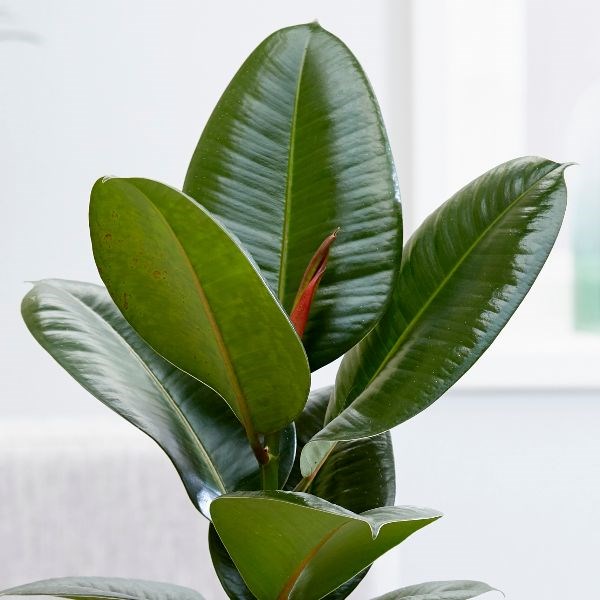
Ficus elastica ‘Robusta’:
This is the most common variety, with large dark green shiny leaves. that can grow up to 20cm long. it looks very attractive if putting near light colored wall.
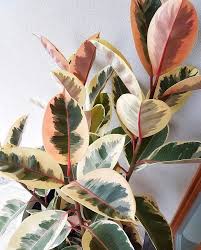
Ficus elastica ‘Tricolor’:
It has thick, leathery leaves, but comes in a mix of three colors, The new foliage emerges with a vibrant pinky red tone which adds impact to the variations of cream and green. I personaly love this varity very much.
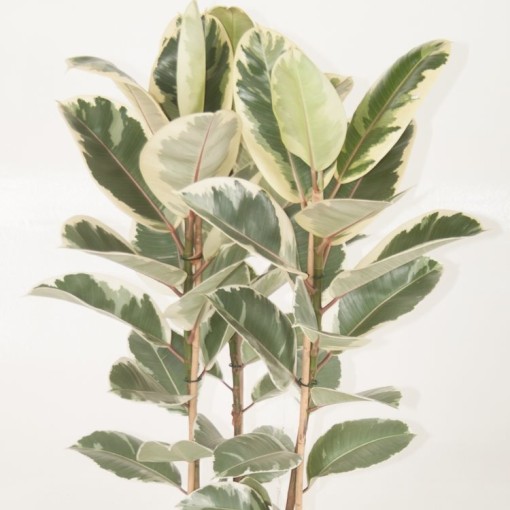
Ficus elastica ‘Tineke’ :
It is new hybrid varitey, has pink stems and leaves that mix dark and light green with cream.

Ficus elastica ‘Decora’:
It has large, green, shiny leaves that grow up to 12 inches long.

Ficus elastica ‘Doescheri’:
It has blotched leaves with pink accents on the stalks’ undersides. It has solid green foliage. When leaves grow, it has green color in the center with an irregular cream border.

Ficus elastica ‘Burgundy’:
It has dark crimson leaves that appear almost black in certain lighting, also called Black Prince. this is most common rubber plant spieces.
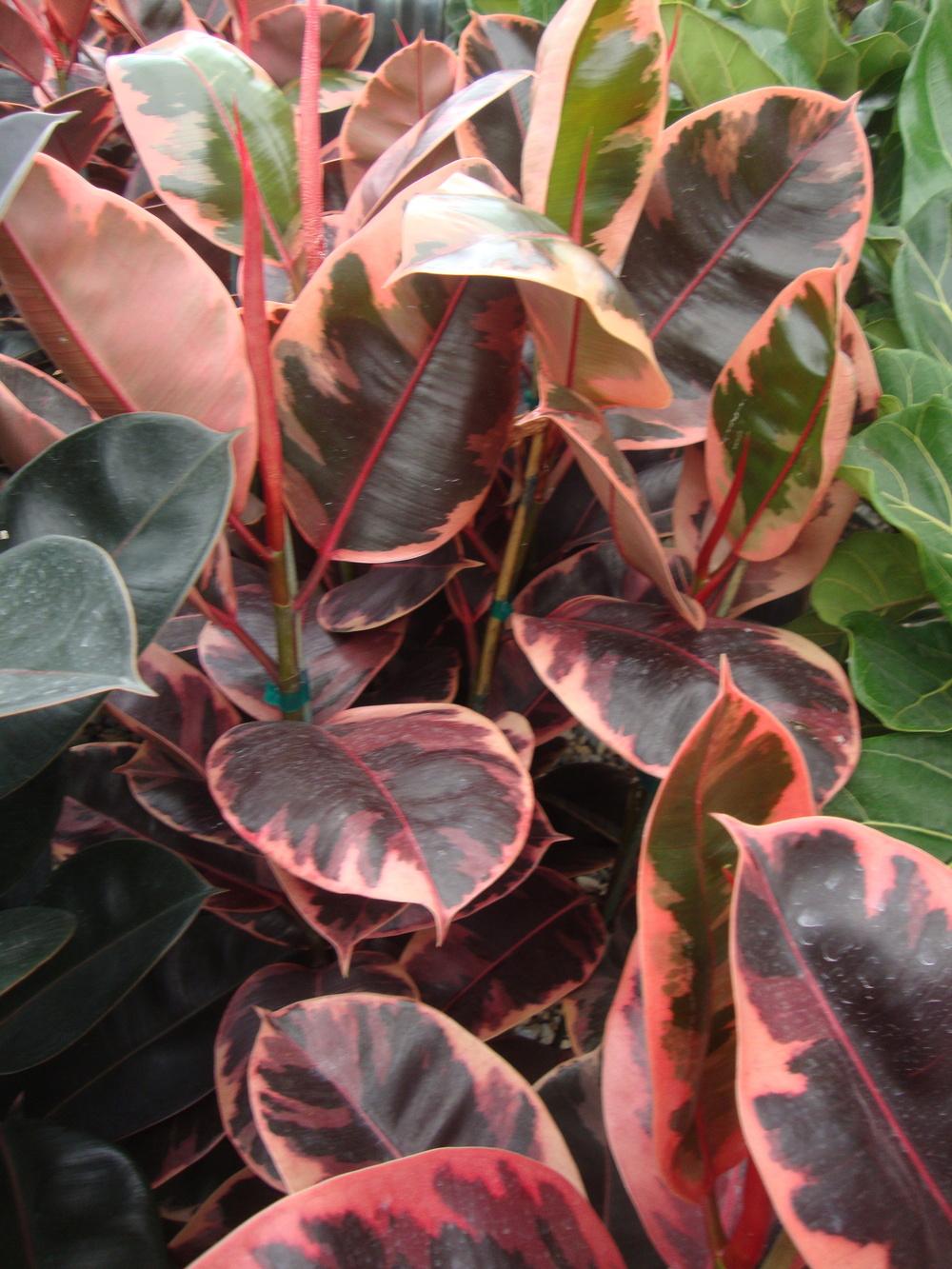
‘Belize’ or ‘Red Ruby’:
It is a greatly eye-catching house plant. Rotate the plant occasionally to encourage even growth.
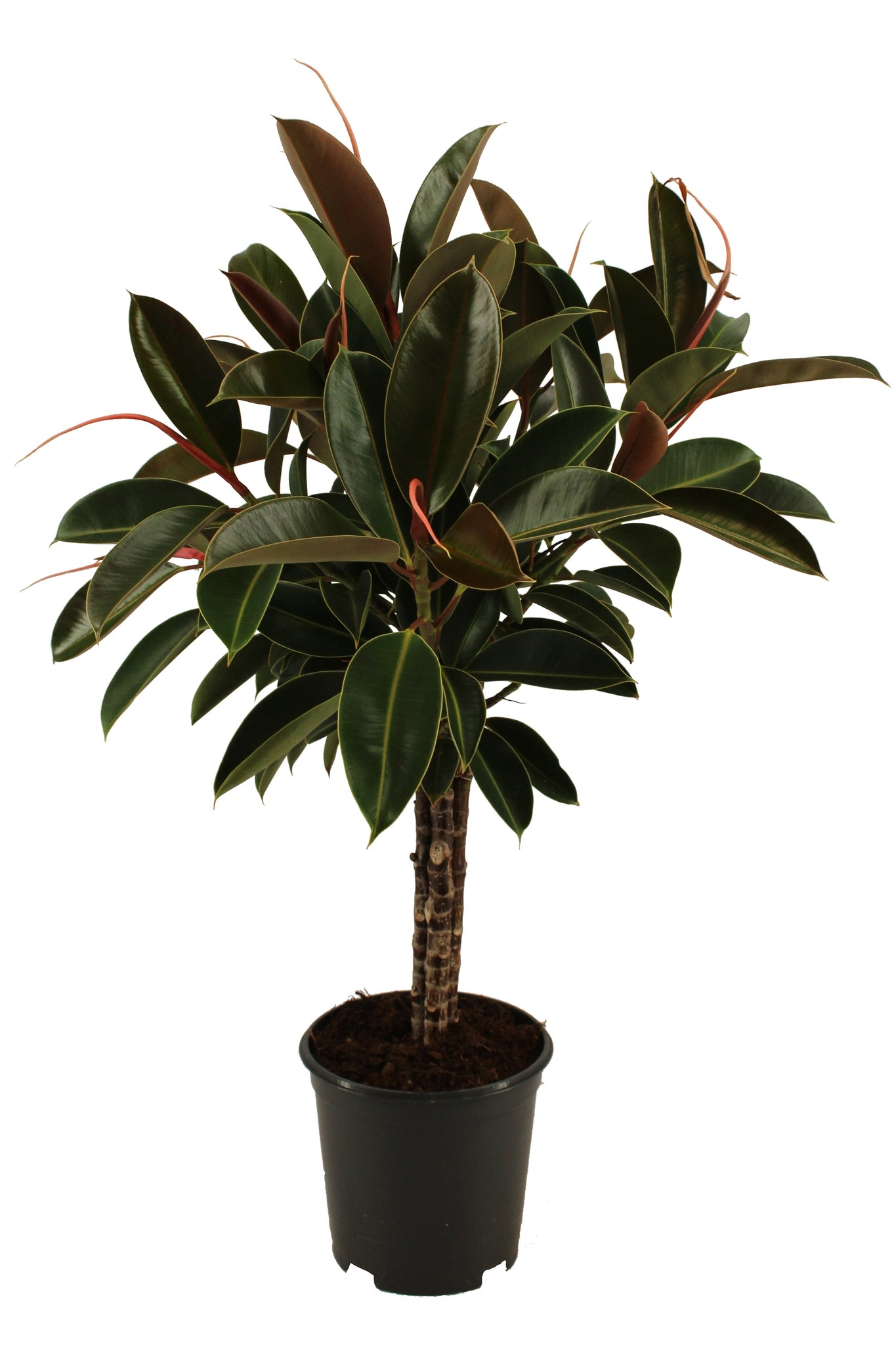
Ficus elastica ‘Melany’ :
Leaves are glossy, and bronze. ‘Melany’ will eventually develop as a dense, elegant shrub and will do well as a house plant in bright rooms.
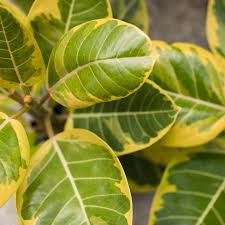
Ficus elastica yellow gem :
Yellow Gem is a beautifully bright variety with glossy oval leaves that are variegated with vivid green and vibrant yellow.
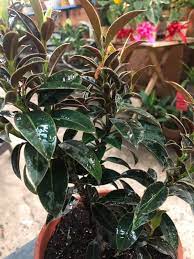
Ficus elastica Dwarf :
It looks like ‘Robusta’ silky green leaves, but small in size
There are more than 1000+ Varieties of rubber plants available. but that is rarely seen in garden nursery.
Common name : Rubber Plant, Rubber tree
How to Plant : Rubber tree can grow from seeds or from stem cuttings. some common species of this plant can also be easily available in a garden nursery.
Also find rubber plant saplings from theaffordablestore, Rubber Plant Sapling link
It is very easy to propagate from stem cuttings. Simply cut off a stem and dip it in to a water after the sap(White colored sticky liquid) has dried. Make sure each cutting is at least 4 - 6 inches long and includes atleat 2 - 3 leaf nodes. like image shows.
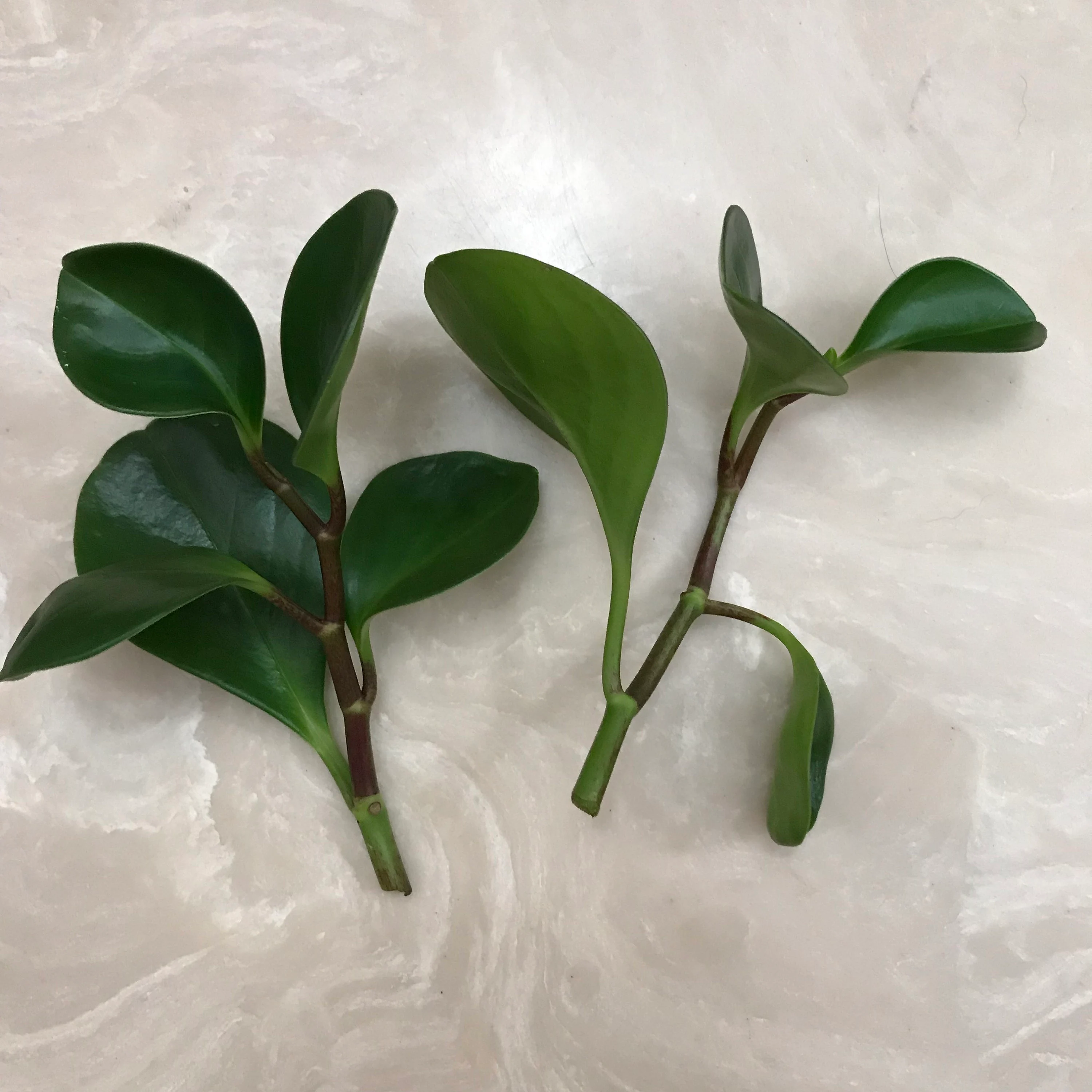
Remove the bottom leaves from the cutting, leaving 2 or 3 leaves at the top. After 15 to 20 days you can see a small dot size white root, then after change water and keep it in to 3-4 days more after plant to soil with potting mix with equal amount of coco peat, pine bark (is a pine tree bark powder) or red soil or sand or perlite.
Active growth period : It grows best in mid-summer to late summer, before the monsoon starts. a rubber tree grows mostly 12-20 inches or more in height each growing season, it will grow much faster if kept outdoors but not in direct sunlight.
Tips: The growth of the plant can be controlled by pruning.
To achive more verticle growth cut bottom old leaves. Make sure not to cut top 12 to 15 inch of the plant. if plant not achived that height yet don’t remove leaves.
To achive side growth cut top most part 5 - 6 inch of the stem. In this case plant height is minimum 15 - 20 inch, this is to ensure that the bottom part is mature enough to handle more branches.
Sunlight : The Rubber Tree needs at least six to eight hours of bright light daily. This can be less light at times, but it is best to give this species medium to bright light.
Water : Add water moderately, whenever the top one-inch of soil feels dry. Provide sufficient drainage to plant and avoid excess watering as it may cause root rot. This plant likes sprinkling water on leaves.
Humidity : It can tolerate any level of humidity, including normal room humidity.
Soil : Rubber plants require well-draining soil to avoid getting root rot. The soil needs to drain completely between waterings.
Temprature : It is best for a temperature of 65°F to 85°F (18°C-30°C), and not let it go below 60°F (15°C). this plant is native to warm jungle climates!
Problems, cause and solution :
SYMPTOM: Leaves turning brown and crispy at the edges
CAUSE: Thirsty plant, Underwatered
SOLUTION: Give water regularly atleast once a week if indoor and twise a week for outdoor. Avoid watring if top soil is wet.
——————————————–
SYMPTOM: Bottom leaves falling off, fading leaves color
CAUSE: Not receiving enough light
SOLUTION: Keep plan outdoor where it gets filtered sunlight. If plant already outdoor place it in brighter area.
——————————————–
SYMPTOM: Dropping leaves
CAUSE: Overwatered
SOLUTION: Repotting and changing soil is the best option, if not possible put the plant outdoor and don’t water till the soil dries, also add some perlite and dry coco peat to the soil.
——————————————–
SYMPTOM: Yellowing bottom leaves
CAUSE: Leaves are too old
SOLUTION: Remove the leaves
——————————————–